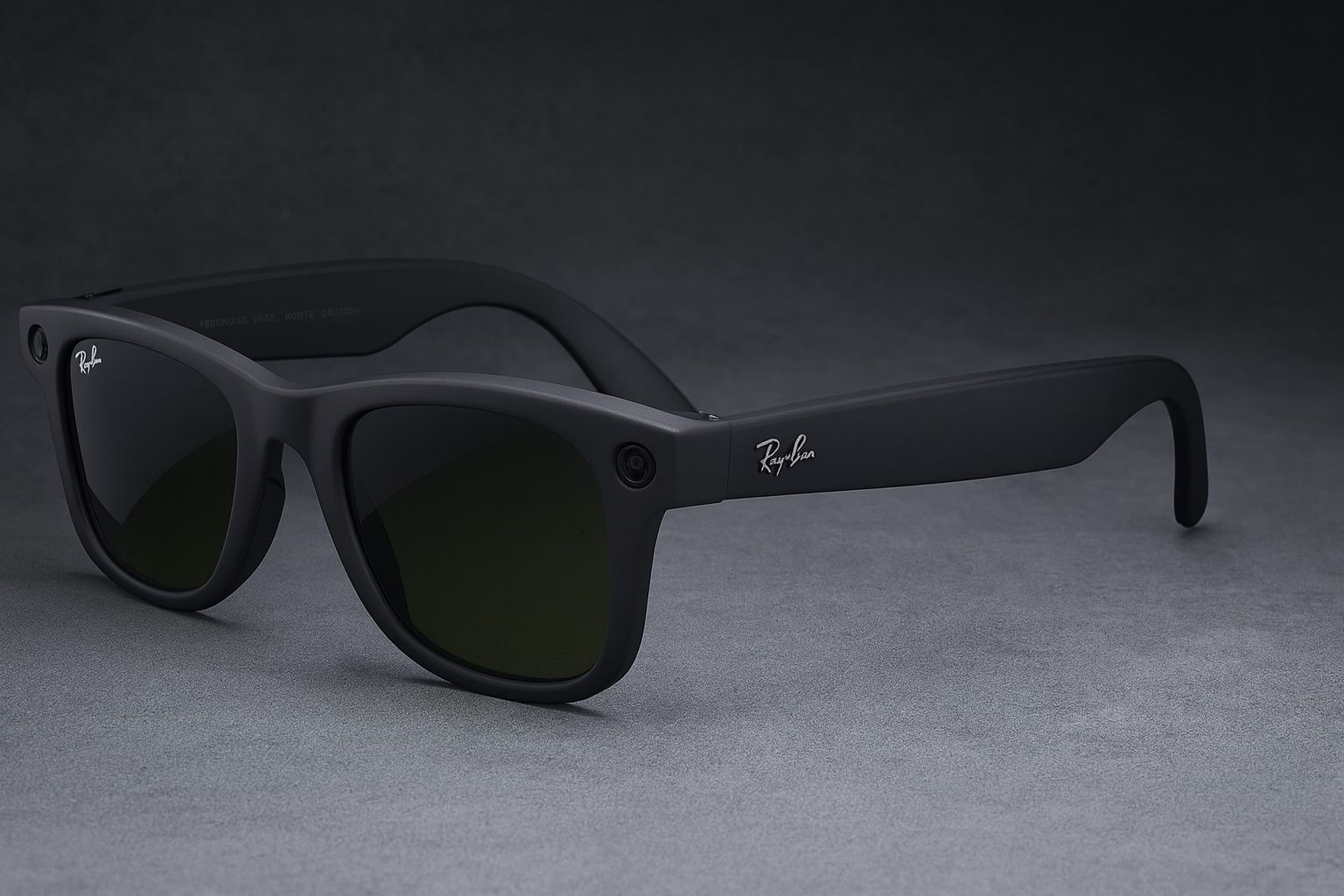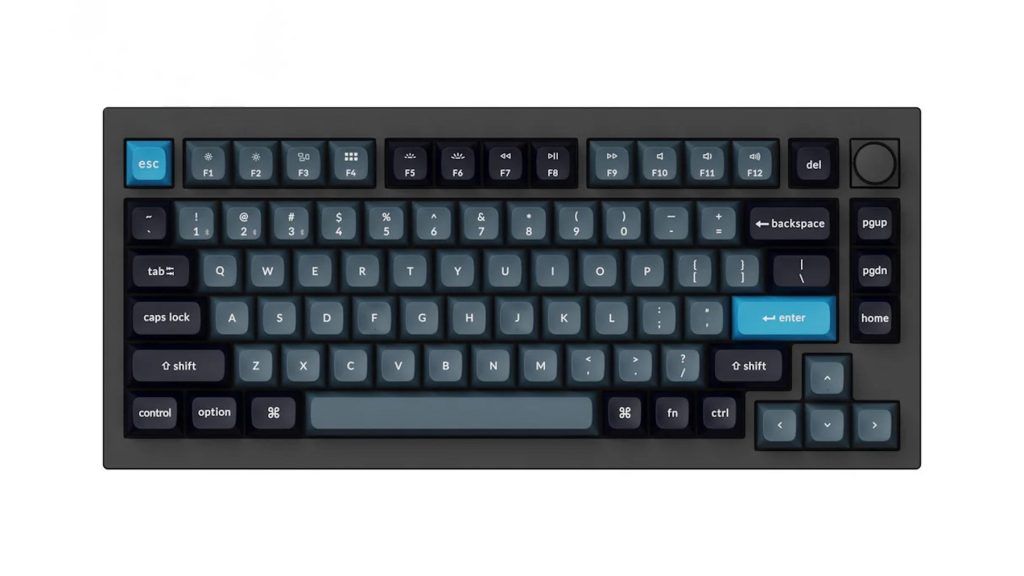- The three standout 2025 smart glasses are Meta Ray-Ban Wayfarer 2 (Gen 2), Xreal Air 2 Ultra, and Rokid Max 2.
- Ray-Ban Wayfarer 2 has no AR display, but includes a 12 MP camera and 1080p video, plus open-ear audio and a 5-microphone array.
- Wayfarer 2 supports livestreaming POV to Facebook/Instagram and integrates Meta AI with multimodal features added in late 2024.
- Xreal Air 2 Ultra delivers a 52° diagonal FoV with dual 1080p HDR micro-OLED displays at up to 120 Hz and 6DoF spatial computing via Snapdragon AR1.
- Air 2 Ultra can connect to Windows PC, Mac, Android, iPhone (via adapter), Steam Deck, PS5/Xbox, and optionally uses Beam Pro for wireless spatial computing, priced at $699.
- Rokid Max 2 provides a 50° FoV with a 360-inch virtual screen at 10 meters, 1080p OLED displays at 120 Hz, ~600 nits brightness, and ~75 g weight with 0 to –6 diopters.
- Rokid Max 2 is plug-and-play via USB-C, with the Rokid Station offering about 5 hours of standalone use.
- Ray-Ban Wayfarer 2 is IPX4 water-resistant and designed for social sharing and POV capture with 12 MP photos and stabilized 1080p clips.
- Air 2 Ultra’s major limitation is that it is not fully standalone and relies on external devices for content and apps, with Nebula/SDK improvements in mid-2025.
- Pricing snapshot: Ray-Ban Wayfarer 2 started at $299 in Oct 2023; Xreal Air 2 Ultra is $699; Rokid Max 2 is around $529 (often discounted to ~$429) as of 2025.
Introduction: Smart Glasses Surge in 2025
Smart glasses have exploded in popularity in 2025, evolving from niche gadgets into mainstream tech. Global smart glasses shipments surged over 200% in 2024, largely thanks to Meta’s Ray-Ban smart glasses, and 2025 is shaping up to be a “battle of hundreds of smart glasses” as more players enter the market [1] [2]. Three standout models leading the charge are Meta’s Ray-Ban Wayfarer 2 (second-generation Ray-Ban | Meta smart glasses), the Xreal Air 2 Ultra, and the Rokid Max 2. Each targets a different slice of the wearable tech experience – from fashionable camera glasses to immersive augmented reality (AR) viewers. In this report, we’ll compare their technical specs, capabilities, use cases, pros and cons, and latest updates, to see which of these 2025 smart glasses best fits your needs.
Tech Specs Comparison: Display, FOV, Performance & More
To kick things off, here’s a side-by-side look at key specifications of the Ray-Ban Wayfarer 2, Xreal Air 2 Ultra, and Rokid Max 2:
| Feature | Meta Ray-Ban Wayfarer 2 (Gen 2) | Xreal Air 2 Ultra | Rokid Max 2 |
|---|---|---|---|
| Display | None – no AR visual display (sunglass-style frames) | 0.68″ Micro-OLED (Sony), 1920×1080 per eye [3] | Micro-OLED, 1920×1080 per eye [4] |
| Field of View | N/A (no see-through overlay) | 52° diagonal FoV [5] (approx. 15% wider than Air 2 Pro) | 50° diagonal FoV [6] [7] |
| Refresh Rate | N/A | Up to 120 Hz (90 Hz in 3D mode) [8] | 120 Hz max [9] [10] |
| Brightness | N/A (no display) | Up to 500 nits (2D mode) [11] | Up to 600 nits (6-level control) [12] |
| Weight | ~50 g (Standard frame ~48–50 g) [13] | 83 g (titanium frame) [14] [15] | 75 g (2.65 oz) [16] – very lightweight |
| Battery Life | ~4–6 hours per charge (typical use) [17]; charging case holds ~8 charges (36 hrs total) [18] [19] | No internal battery (powered via USB-C tether or Xreal Beam) | No internal battery (powered via device; optional Rokid Station Android puck provides ~5 hrs use [20]) |
| Audio | Open-ear stereo speakers (improved 50% louder vs Gen 1) [21]; 5-mic array with spatial audio capture [22] [23] | Dual stereo speakers + 2 mics; enhanced directional sound to reduce leakage [24] [25] | Dual speakers (built into frames) + noise-canceling mics; audio is decent but “middling” in quality [26] [27] |
| Camera | 12 MP ultra-wide camera (up from 5 MP prior); 1080p video recording at 30 fps (60 sec clips max) [28] | Dual 3D environmental sensors for spatial tracking (depth mapping); not intended as a photo/video camera [29] [30] | None (no outward-facing camera for photos or AR) |
| AR/XR Features | No visual AR display. Functions as “AI camera glasses” – voice assistant (“Hey Meta”) + photo/video capture. Can livestream POV video to Facebook/IG [31]. Real-time AI can answer questions about what you see (e.g. identify landmarks) and translate speech [32]. | Full AR: 6DoF spatial tracking (supports anchored 3D objects), hand and head tracking support [33]. 3-level electrochromic dimming (0%, 35%, 100%) for see-through vs. opaque view [34]. Can project 3D models into your space and let you walk around them, interact via gestures, etc. [35] [36]. | 2D AR display: Essentially a portable big-screen display for media/games. Fixed 3DoF head-tracking for a 360″ virtual screen at 10 m distance [37]. No environmental mapping or true AR overlays. Built-in myopia adjustment dials (0 to –6.00 D) to focus without prescription lenses [38] [39]. |
| App Ecosystem | Meta AI app (formerly Meta View) on iOS/Android for setup and management [40]. Integrates with Meta’s social apps – capture and share to Facebook, Instagram, WhatsApp, etc. Voice assistant and “smart” features updated via Meta’s software (e.g. added multi-modal AI features in late 2024) [41]. | Xreal Nebula platform for AR content and screen mirroring. Works with a wide range of devices: Android phones (USB-C), iPhones (via adapter), Windows PCs, Macs, Steam Deck, Nintendo Switch, etc. [42] [43]. Optional Xreal Beam/Beam Pro controllers add Android OS and unlock advanced 3DoF/6DoF modes (Beam Pro enables full spatial computing). SDK available for developers [44] [45]. | Rokid app & Station – Plug-and-play via USB-C to phones, laptops, game consoles. The Rokid Station (optional $199 Android TV puck) can run apps independently for the glasses, essentially turning them into a standalone media viewer [46]. Android ecosystem (streaming apps, games) accessible via Station. No open AR SDK noted (mostly geared to consumer media use). |
Table 1: Key specifications of Meta Ray-Ban Wayfarer 2, Xreal Air 2 Ultra, and Rokid Max 2 smart glasses (2025). Each model brings a unique hardware focus – from the Ray-Ban’s social-media savvy camera and audio, to Xreal’s cutting-edge AR visuals, to Rokid’s cinema-like display and eyesight-friendly design.
Use Cases: Media, Gaming, Productivity, Social & More
Smart glasses aren’t one-size-fits-all – each excels in different use cases. Here’s how these three compare across common scenarios:
- Media Consumption (Movies & Videos): Rokid Max 2 is purpose-built for entertainment. Its 50° FOV and up to 360″ virtual screen make it feel like watching a giant TV in your glasses [47]. Reviewers say it’s ideal for “watching films and playing games – if you’re a fan of the big-screen experience” on the go [48]. The Xreal Air 2 Ultra also delivers an immersive viewing experience with a slightly wider FOV (52°) and vibrant 1080p OLED visuals [49]. Xreal’s electrochromic dimming can black out your view (100% tint) to create a dark theater-like effect even in bright environments [50]. By contrast, the Ray-Ban Wayfarer 2 is not designed for watching video directly – it has no built-in display. You can still listen to music or podcasts on it (it works as Bluetooth audio glasses), but for actual video playback you’d use your phone or another device as the screen.
- Gaming: For gaming, Xreal Air 2 Ultra stands out because it can connect to PCs, consoles (Steam Deck, Nintendo Switch), or even smartphones to act as a personal gaming display [51] [52]. With 120 Hz refresh rate and low-latency tracking, it’s well-suited for immersive gaming. Xreal even demonstrated AR gaming: you can anchor virtual game objects in your room and walk around them, akin to a lightweight Vision Pro experience [53] [54]. Rokid Max 2 can similarly mirror your game console or PC display (at 120 Hz) for a big-screen experience; it’s great for conventional games or cloud gaming, but it lacks the interactive AR element. The Ray-Ban glasses are not meant for gaming at all – however, you can use them to livestream your real-world activities (for example, livestreaming a first-person view while playing outdoor games or sports) to social platforms [55], which is a different take on “gaming” use.
- Productivity & Work: Xreal Air 2 Ultra offers the most for productivity. When tethered to a laptop or paired with the Xreal Beam, it can create multiple virtual screens or a massive desktop workspace in front of you (the concept of a “spatial screen” for coding, writing, or multitasking) [56] [57]. Its 6DoF tracking means you could pin a window in your environment and have it stay in place as you move, enabling some Minority Report-style working. Rokid Max 2 can serve as a private second monitor for your laptop or a mobile office – its clarity and 1080p resolution are sufficient for reading text and editing documents, effectively giving you a 360″ monitor anywhere [58]. However, Rokid lacks advanced AR software for things like gesture control or multiple floating windows – it’s mostly screen mirroring. The Ray-Ban Wayfarer 2 is limited for traditional “productivity” since it has no display; yet it can function as a headset for calls and meetings. In fact, many users wear Ray-Ban Metas to take hands-free calls or dictate messages while still seeing their surroundings, treating them as an audio assistant rather than a visual tool [59] [60].
- Social Sharing & Photography: This is where the Ray-Ban Wayfarer 2 shines. Co-created by Meta and Ray-Ban’s parent Luxottica, these glasses are designed for content creation and social media. They capture first-person photos and videos easily – either via the voice command (“Hey Meta, take a photo”) or a tap of the frame [61] [62]. The 12 MP camera produces surprisingly good images and stabilized 1080p clips that casual viewers “thought were taken on my phone,” according to one reviewer [63] [64]. You can instantly share moments to Facebook/Instagram or even livestream from your POV, which “expands the addressable market” for these glasses by giving people a compelling reason to wear them [65]. The Ray-Bans also excel at hands-free social interaction – you can listen to incoming messages and reply by voice, or ask the Meta AI to quickly generate a status or caption. Xreal Air 2 Ultra and Rokid Max 2 have no front-facing cameras, so they’re not meant for capturing your life moments. They are more about consuming content than creating it. If you’re a vlogger or love sharing videos from a unique perspective, the Ray-Bans are the go-to choice here [66] [67].
- Navigation & Outdoor Use: Smart glasses promise “heads-up” directions, but among these three, only the Ray-Ban could loosely fit that bill – and even then, it doesn’t project a map in your view (no display). Instead, you could use its audio features for turn-by-turn directions via your phone’s assistant, or ask “Hey Meta, how do I get to ___?” and get spoken guidance. The Wayfarer 2 looks and feels like regular sunglasses (available with polarized or Transition lenses), so you can wear them outside comfortably [68] [69]. They’re water-resistant (IPX4) and more durable than the first-gen, making them suitable for daily wear [70]. Xreal Air 2 Ultra and Rokid Max 2 are a bit bulkier and tinted; you can walk around with them in see-through mode (especially Xreal in 0% dimming clear state), but they are still techy-looking glasses mainly intended for stationary use. Xreal with a phone might eventually overlay arrows on your world (developers could create AR navigation apps), but as of 2025 that’s not a primary use case. In short, for navigation, a smartwatch or phone is still easier – though Ray-Ban’s discreet form means you can use it as an audio guide and camera during travels without looking like you’re wearing a gadget [71] [72].
Pros and Cons of Each Model
Let’s distill the strengths and weaknesses of each smart glasses model:
Meta Ray-Ban Wayfarer 2 (Ray-Ban | Meta Smart Glasses Gen 2)
Pros:
- Stylish & Discreet: Classic Ray-Ban Wayfarer design with over 150 frame/lens combinations [73]. They look like normal sunglasses, so you “won’t look like you’re filming a Black Mirror episode at brunch” (as one user quipped) – in other words, very incognito [74].
- Great Camera for POV Capture: 12 MP photos and 1080p videos are “surprisingly good”, approaching smartphone quality for social sharing [75] [76]. Stabilization and low-light improvements mean you can reliably capture moments hands-free. Reviewers noted friends couldn’t tell the difference from phone snaps [77].
- Improved Audio & Calls: Loud, clear open-ear speakers with richer bass and 50% higher volume than the previous gen [78]. The 5-microphone array (with a mic in the nose bridge) gives excellent call quality – folks on the other end often couldn’t tell you were on glasses, even in noisy environments [79] [80]. Spatial audio recording means videos play back sound with directional context (you can hear which side noises came from) [81].
- Hands-Free Meta AI: Integrated voice assistant that can take photos/videos on command, read out your texts, send messages, and answer general queries. It even got new multimodal AI features in late 2024 – like describing what you’re looking at or translating signs in real-time [82]. This “wearable AI” aspect is a turning point that redefines what smart glasses can do [83] [84].
- Social Media Integration: Designed for Facebook, Instagram, WhatsApp users. One-tap live broadcasting of your POV to social platforms is a unique capability [85]. This makes the glasses particularly appealing to content creators and avid streamers, giving them a “meaningful raison d’être” beyond just tech for tech’s sake [86] [87].
Cons:
- No Visual Display: These are not AR glasses in the display sense. There is no screen or projector in the lenses, so you can’t see navigation prompts, notifications, or holograms in your field of view (they’re purely camera-and-audio smart glasses). As one review put it, “not really [smart] in the way you’ve probably envisioned from sci-fi movies” [88]. If you want on-lens visuals or holographic info, look elsewhere.
- Limited Battery Life: ~4 hours of heavy use (video recording, etc.) will drain the glasses [89]. With lighter use (music, occasional photos), you might get ~6 hours. This should cover a half-day of use, but power users will need to pop them in the charging case (thankfully the case holds 8 extra charges) [90] [91]. It’s not an all-day device unless you intermittently charge.
- Privacy Concerns: The very features that make them cool – stealthy recording and AI that “sees” your surroundings – can raise privacy eyebrows. There is an LED that lights during recording, but it’s small [92] [93]. People around you generally “don’t bat an eye” since the glasses look normal [94] [95], which is great for you but potentially uncomfortable for others. It’s a new social paradigm to navigate (“Am I the glasshole?” as some have joked).
- Feature Limitations: The voice assistant, while neat, is still fairly limited in capability (simple queries, messages) and sometimes “takes a hot second to process commands” [96] [97]. It’s beta-level AI. Also, no integration with non-Meta apps for voice (e.g., you can’t WhatsApp a video directly to Telegram or iMessage without using your phone). Essentially, you’re somewhat sandboxed in Meta’s ecosystem for the “smart” features.
- Price of Style: At $299 base, they’re not cheap for what are essentially camera sunglasses. If you add prescription lenses or Transitions, the cost goes up. They do function as regular eyewear (you can get your Rx in them), but if the battery dies mid-day, you’re left with standard glasses – which, while still UV-protective, means any “smart” functionality is done until a recharge.
Xreal Air 2 Ultra
Pros:
- Immersive AR Visuals: The Air 2 Ultra delivers one of the best visual experiences in consumer AR glasses to date. It sports dual 1080p HDR micro-OLED displays at up to 120 Hz, giving a crisp image for movies and games [98] [99]. The field of view expanded to 52°, which “might not sound huge, but… XReal finally discovered how to address [the immersive experience]” that other AR glasses struggled with [100]. In practice, that means a noticeably larger and more encompassing picture compared to older 46° models – closer to a true theater experience in your view.
- 6DoF Spatial Computing: This is where the Ultra truly sets itself apart. Thanks to dual cameras (environment sensors) and an onboard Qualcomm Snapdragon AR1 chipset, it supports full six-degrees-of-freedom tracking and depth mapping [101] [102]. In demos, users could pin a 3D spaceship in mid-air and walk around it, with the object staying perfectly in place [103]. Hand-tracking allows Minority Report–style gesture control (though this is early-stage and was a bit finicky in previews) [104] [105]. For AR enthusiasts, the Air 2 Ultra provides a taste of high-end mixed reality in a glasses form factor – something no other product in this weight class is doing as of 2025.
- Comfort and Build: Xreal used a titanium alloy frame making the device strong yet relatively light at ~83 g [106]. The design includes adjustable nose pads (S/M/L) and 3-point bending temple arms for a custom fit [107] [108]. Early testers reported it’s very comfortable for multi-hour wear, with “soft nosepads, flexible temples, [and] balanced weight distribution – this is what advanced AR design is supposed to be” [109] [110]. It doesn’t squeeze or slip much, and it even earned TÜV Rheinland certification for low blue light and flicker-free eye safety [111] [112].
- Versatile Connectivity: The Air 2 Ultra is highly versatile – it can connect to almost anything. Plug it into a Windows PC, Mac, Android phone, iPhone (via adapter), Steam Deck, PS5/Xbox (via HDMI adapter) – you name it [113] [114]. This makes it not just an AR dev kit, but also a universal personal display. Additionally, the optional Xreal Beam Pro hub (essentially an Android mini-computer with 6DoF support) can drive the glasses wirelessly and unlock the full spatial experience without being tethered to your phone [115] [116]. This flexibility means you can use Air 2 Ultra for work (as extra monitors), for travel entertainment (movies on a plane via your phone), for AR gaming with Beam, etc., adapting to many scenarios.
- Good Audio with Privacy: The built-in speakers are quite rich and directional. Xreal uses an improved “2nd generation sound system” that beams audio to your ears with minimal leakage [117] [118]. So you can watch a movie without disturbing others nearby. It also has dual microphones so you can take calls or issue voice commands (useful if paired with a phone’s assistant or Xreal’s voice controls). While audio on AR glasses is never going to have heavy bass, reviewers found the sound “robust and powerful” for its class [119]. It’s perfectly fine for enjoying a show or doing a video call.
Cons:
- Premium Price: At $699 for the glasses alone [120] [121], the Air 2 Ultra is more than double the price of Xreal’s non-Ultra models (the Air 2 Pro is ~$299) and pricier than many competing AR glasses. You are essentially paying for the advanced sensors and titanium design. And if you add the Beam Pro to unlock all features, that’s a bundle often approaching $900+ [122] [123]. This is still far cheaper than something like an $3,500 Apple Vision Pro, but for average consumers, it’s a significant cost for a wearable display.
- Not Fully Standalone: While it has on-board processing for tracking, the Air 2 Ultra depends on external devices for content and apps. There’s no built-in battery or storage to run apps on the glasses themselves (unless you use the Beam or plug into a phone that runs the apps). In other words, out of the box it’s more of a high-tech peripheral than an independent smart device. Some early reviewers noted it “requires connection to a separate device for advanced functionality,” which can be a limitation [124] [125]. Unlike true standalone AR headsets, you can’t just put on Air 2 Ultra and use it untethered (except maybe to watch a pre-loaded video via Beam’s storage).
- Bulkier Aesthetic: Xreal has improved the style over its earlier models, but these glasses still don’t pass as normal eyewear. They have a somewhat chunky, goggle-like front to accommodate the displays and sensors. One preview pointed out the “big gap between the glasses and your eyes” and that they sit a bit far out on the face, making them look less natural from side angles [126] [127]. They do emulate a sunglasses look from the front (similar to a large Wayfarer shape), but anyone who sees you up close will guess you’re wearing some gadget. In short, they’re more for tech demos and home/office use than making a fashion statement on the street.
- Early Software & SDK: The full AR capabilities (like hand gesture control, multi-window AR desktops, etc.) are still in early development. The demo software had hiccups, e.g. hand pinching interactions were not very precise yet [128]. Xreal’s Nebula software is evolving, and an SDK (NRSDK 2.2) was scheduled with improved spatial computing features like hand tracking [129]. But as of mid-2025, the Ultra’s advanced AR features are mostly in developer or enthusiast territory. Don’t expect a polished, Apple-level AR app ecosystem here – it’s more of a tech enthusiast’s playground.
- No Onboard Camera for Photos: The “cameras” on Ultra are strictly for environmental sensing (depth and tracking). Unlike the Ray-Ban, you cannot snap photos or videos of the real world to save or share – there’s no accessible camera roll or social sharing feature. If you’re wearing Ultra and see something cool IRL, you’ll still need your phone to capture it. The Ultra’s focus is displaying virtual content to you, not capturing real content (the opposite of Ray-Ban’s approach). This isn’t a problem for AR use, but it means the glasses won’t replace a GoPro or Snapchat Spectacles for any kind of lifelogging.
Rokid Max 2
Pros:
- Big Cinematic Screen Experience: Rokid Max 2’s calling card is its giant virtual screen and high-quality image for media. With a 50° FOV projecting up to a 360-inch screen at 10 m, wearing these feels like sitting in a movie theater [130]. The 1080p OLED displays (120 Hz) and ~600 nit brightness create a bright, sharp picture [131]. For watching Netflix, YouTube, or playing console games, many reviewers have praised the Max series as an excellent portable theater. TechRadar notes the “120Hz full-HD OLED visuals” and calls the display one of the product’s big pluses [132]. If you love media, Rokid Max 2 delivers a very immersive viewing without needing a bulky VR headset.
- Lightweight & Comfortable: At just ~75 g, the Max 2 is lighter than even the Xreal (which is already light) [133]. Users report you can wear it for hours without strain [134]. Rokid improved the design slightly from the first-gen Max – a bit sleeker styling and a dark gray color that’s more subtle than the old metallic blue [135]. It still looks like tech glasses, but the weight distribution and fit are comfortable. It comes with adjustable nose pads and built-in diopter dials for nearsighted users, so you can dial in your exact prescription (0 to –6 D) without separate lens inserts [136] [137]. This “feature every pair of AR smart glasses needs to have” according to one reviewer [138] – it’s a godsend for glasses wearers, eliminating the hassle of ordering prescription lenses.
- Ease of Use (Plug and Play): Rokid Max 2 doesn’t require special software or complex setup. Essentially, if you have a USB-C output on your phone, laptop, or tablet, just plug the glasses in and they act as an external display. There’s no finicky AR calibration needed. This simplicity makes them a fine option for everyday users, especially when they are on sale at lower prices [139] [140]. Additionally, the optional Rokid Station (a pocket-sized Android hub) can be bought in a bundle – you connect the glasses to the Station and stream content or even play Android games for about 5 hours on battery [141] [142]. Essentially, Rokid gives you the choice to use it as a straightforward screen for your own devices, or as a semi-standalone viewer with the Station.
- Privacy and Focus: The Rokid Max 2 includes two snap-on front lens covers (one semi-transparent, one opaque) to help you view content in different environments [143] [144]. The lightly tinted cover lets some outside light in – good for seeing your surroundings while still watching, say, a tutorial. The fully dark cover blocks external light completely – great for truly focusing on a movie or work in a bright room. Reviewers appreciated this approach for its simplicity and effectiveness, even though it’s not as instant as electrochromic dimming [145] [146]. It ensures you can get a bright, contrasty image when needed, or maintain situational awareness when you prefer.
- Affordable (Relative to Peers): With a list price around $529 (and often discounted to ~$429) [147] [148], the Max 2 undercuts many rivals offering similar display quality. It’s significantly cheaper than Xreal’s Ultra. Given that Rokid didn’t change the core tech much from the already-cost-optimized Rokid Max, they pass those savings to consumers. If you don’t need fancy AR features and just want a big AR screen, Rokid Max 2 is one of the more value-packed choices in 2025’s lineup.
Cons:
- Minimal Upgrades from Rokid Max (Gen 1): By most accounts, Max 2 is an incremental update. “Not much of an upgrade from the previous model,” as XR Today noted bluntly [149]. The resolution, FOV, refresh, and audio hardware are effectively the same as the 2023 Rokid Max [150] [151]. The main differences are a slightly refined design and the larger virtual screen projection (360″ vs ~215″ previously). So if you already own Rokid Max, there’s little reason to rush to Max 2. It seems Rokid focused on comfort tweaks rather than new tech – which some might call a missed opportunity for innovation in this generation.
- Limited AR/Interactive Functionality: The Max 2 are fundamentally display-only glasses. They have head-tracking for orientation (so you can lock the screen in front of you to some degree), but no spatial mapping, no gesture recognition, and no cameras. They won’t overlay virtual objects into your environment or allow any “mixed reality” interactions. This limits use cases to media and basic productivity. As TechRadar summarized, “performance-wise they sit in the middle of the pack” – good image but nothing beyond rivals in features [152] [153]. If AR apps or dynamic overlays are what you seek, the Max 2 will disappoint.
- Audio Could Be Better: The speakers in Max 2 are passable but not great. They are positioned near the lenses and direct sound to your ears, but multiple reviews call the audio “middling” or limited [154] [155]. There’s not much bass, and they can be hard to hear in noisy environments. You might end up using earbuds or headphones instead, especially outdoors or on a plane. The lack of any fancy spatial audio or noise reduction means Rokid hasn’t prioritized the sound experience as much as the visuals. This is fine for casual use, but if audio immersion is important to you, note that you may need auxiliary audio devices.
- No Case with Battery: Unlike the Ray-Ban (which includes a charging case) or the Nreal Beam option, Rokid doesn’t provide a charging carrying case – because the glasses have no battery to charge. While this avoids extra weight on your face, it also means the glasses always need a power/source device. Using them will drain your phone or laptop battery. The Rokid Station is the workaround if you want a dedicated battery source, but that’s an extra purchase. In a way, this ties you down – you can’t, for example, watch a movie with just the glasses alone on a park bench unless you also plug into a phone or Station. Some users might prefer a slightly heavier glasses with a built-in battery for short untethered use (which other products like HTC Vive Flow attempted), but Rokid has not gone that route.
- Bulkier Look: Though improved, the design is still chunky compared to something like the Ray-Ban. The front has “large, flat, slightly bulging” lens housings and thick arms to hold all the components [156]. They are more conspicuous than Xreal’s glasses or many newer AR frames. You likely won’t be wearing these as your everyday sunglasses – they’re plainly a gadget. For some, that’s not an issue during a flight or at home, but it can feel awkward in public. As AR Insider noted, Rokid still “hasn’t managed to slim [them] down to compete aesthetically with something like the Meta Ray-Bans” [157].
Recent News & Launch Updates (as of August 2025)
All three of these smart glasses debuted within the last two years, and each has seen updates or news in that time:
- Ray-Ban | Meta Smart Glasses (Gen 2) – Launched in October 2023 at $299 [158], these glasses had a strong start, reportedly driving much of the smart glasses market growth in 2024 [159] [160]. In September 2024 at Meta’s Connect event, Meta announced new AI features rolling out: the glasses can do things like real-time speech translation, summarize what you just heard, or answer questions about objects you’re looking at (using image recognition via the camera) [161]. These features, delivered through software updates to the companion Meta AI app, began beta testing in the US in late 2024 [162]. As of August 2025, Meta has also expanded availability of the glasses to more countries and introduced additional frame styles (the collection now includes a retro round “Headliner” frame alongside the Wayfarer, in multiple colors) [163]. With Apple’s entry into spatial computing (Vision Pro) and others, Meta is positioning its Ray-Ban lineup as an entry-level “wearable AI” device for the masses. So far, it seems to be working – Counterpoint Research cites “strong demand for Ray-Ban Meta smart glasses” and even traditional eyewear companies like Luxottica see this as the future [164] [165].
- Xreal Air 2 Ultra – First announced at CES 2024 (January 2024) [166], the Air 2 Ultra began shipping in March 2024 for early adopters at $699 [167] [168]. Initially it went through a developer-focused launch (Xreal provided units to devs to build AR apps and experiences) and by mid-2024 it became available to consumers in the US, EU, and select markets. Xreal has been actively updating the device’s software: by summer 2025, the Nebula app supports Mac OS (beta) with 3D environments [169] [170], and Xreal’s NRSDK 2.2 (released mid-2025) improved hand-tracking and introduced better spatial mapping APIs [171]. There’s been buzz about Xreal partnering with content providers – for example, rumors of an Xreal app store for AR apps or exclusive AR games, though nothing major has launched yet. One notable comparison often made in the tech press is Xreal Air 2 Ultra vs. Apple’s upcoming Vision Pro: while they’re very different devices, Xreal has embraced the “spatial computing” marketing to ride the wave. Some tech sites even dub it an “Apple Vision Pro competitor” in spirit [172], since it gives a slice of AR at a fraction of the cost. As of August 2025, Xreal has also released a cheaper sibling (Air 2 Pro, without the 6DoF sensors, $299) and an enterprise-focused variant (Xreal Halo) in some regions, indicating the company’s growing range of AR wearables.
- Rokid Max 2 – The Max 2 was quietly released in late 2024 (around December) as a follow-up to the Rokid Max. It didn’t have a flashy launch event; in fact, Rokid didn’t even list it separately on their website at first [173]. It became known through an “AR Joy 2” bundle which included the new glasses and the existing Station adapter [174]. By January 2025, reviews started to appear, confirming the slight changes. In June 2025, a TechRadar review highlighted the Max 2’s built-in myopia adjustment as the standout feature that “every pair of AR glasses needs” [175], underscoring Rokid’s focus on user comfort. Priced at $529 (often discounted to ~$429) [176], Rokid Max 2 has been competing closely with Xreal’s standard Air 2 and other mid-range options. In recent news, Rokid has been reportedly working on AR software partnerships – for example, exploring collaborations with streaming services to optimize their apps for the glasses. No major firmware upgrades have been publicized, but Rokid did mention at a spring 2025 tech expo that they are researching higher FOV optics for future models and exploring adding inside-out tracking (which could mean a future Rokid model might attempt some 6DoF capabilities). For now, the Max 2 remains a solid, if iterative, improvement geared toward media lovers. As one XR Today reviewer put it, “the previous glasses were already excellent,” so Rokid played it safe with a small refresh [177] [178].
Expert Quotes and Verdicts
To provide further insight, let’s hear what industry experts and reviewers have said about these smart glasses:
- The Verge on Ray-Ban | Meta: “Whatever you think of Meta, these are a turning point for smart glasses.” Senior reviewer Victoria Song was impressed that Meta “hasn’t reinvented the category, but it’s nailed the execution” [179] [180]. She highlighted how the Ray-Ban Meta glasses feel like something you’d actually want to wear daily, blending style with genuine utility. In her review, she noted the improved camera and audio make it “a significant update” that finally makes the future of face-mounted tech “look cool” [181] [182].
- Engadget on Ray-Ban | Meta: Engadget’s wearables editor echoed similar sentiments, giving the glasses a 4/5 rating. They wrote that the Ray-Ban Metas “feel less like a novelty and more like something people can actually use” [183]. In particular, the review praised the seamless Facebook/Instagram sharing and the fact that you don’t look like a cyborg while wearing them. The only major gripe was the limited battery, but overall Engadget concluded these glasses “make the future a lot more wearable.”
- XR Today on Xreal Air 2 Ultra: “XReal’s latest smart glasses don’t just build on previous functionality – they promise a next-generation user experience… positioned as a lightweight, more affordable competitor to Apple’s Vision Pro.” [184] XR Today’s Rebekah Carter noted the Air 2 Ultra’s 52° field of view and comfortable design as standout features, calling the visuals and comfort “fantastic… compared to most headsets” [185] [186]. Her early verdict listed pros like the powerful Snapdragon processor and hand/head tracking ease of use [187], while cautioning that it’s “still quite expensive” and limited in standalone use [188]. In sum, the take was that Xreal is “turbocharging” the AR glasses category and might finally deliver the immersive experience early AR adopters have been craving [189] [190].
- PhoneArena on Xreal Air 2 Ultra: In a hands-on preview, PhoneArena reported that the Air 2 Ultra’s AR demos were highly promising: “It didn’t budge one bit… that’s all we want from a pair of AR glasses!” they wrote, describing how a 3D spaceship remained solid as the tester moved around [191] [192]. They were optimistic about the hardware, saying the 3D model “looked pretty good… moved smoothly”, and highlighting the “blockbuster feature” of electrochromic dimming for switching between AR and VR-like immersion [193]. The preview did note that the hand-gesture interaction was imperfect, but overall concluded “my first impression is very positive” regarding image quality and AR potential [194] [195].
- TechRadar on Rokid Max 2: TechRadar’s Hamish Hector gave the Max 2 a generally favorable review, especially for those with less-than-perfect eyesight. He wrote, “The Rokid Max 2 AR glasses look like a great option for people who would benefit from in-built myopia adjustments – and a fine option for everyone else at their discounted price.” [196]. His verdict praises the 120Hz OLED visuals and comfort, but notes the audio is only “fine” and that at full price, they’re less compelling than at $100 off [197] [198]. The lack of electrochromic dimming was listed as a con (since you have to manually swap lens covers) [199], but the reviewer was impressed by how lightweight and wearable they are for long sessions [200]. Overall, TechRadar sees Rokid Max 2 as a strong pick for movie enthusiasts and a sign that convenience features like diopter dials might become standard in the industry.
- XR Today on Rokid Max 2: XR Today’s review by Rebekah Carter pointed out that Rokid “hasn’t changed much at all” in the new model but also acknowledged the first-gen Max were “some of my favorite – affordable glasses for an adjustable virtual display” [201] [202]. She lauded the 360″ screen and excellent FOV/refresh, listing the sleeker design and comfort as pros [203] [204]. The cons were mostly that it wasn’t a big leap forward and that brightness could be better compared to rivals (Xreal claims 500 nits vs Rokid’s 600 nits, but user perception sometimes favored Xreal’s clarity). The bottom line from XR Today was that if you don’t already own the first Max, the Max 2 is a superb media viewer and “a decent upgrade” – just not a revolutionary one [205] [206].
Conclusion
In 2025’s thriving smart glasses arena, these three devices show how far the technology has come – and the different directions it’s branching into. The Ray-Ban Wayfarer 2 (Meta smart glasses) is the choice for those who want an everyday wearable that keeps them connected and capturing moments, all while looking like a classic pair of shades. It’s essentially an extension of your smartphone’s camera and voice assistant onto your face, and reviewers believe it finally delivers on making smart glasses stylish and socially acceptable [207] [208].
The Xreal Air 2 Ultra, on the other hand, is pushing the envelope of augmented reality and spatial computing in a compact form. It’s the enthusiast’s gadget – pricier and a bit geeky – but capable of experiences previously only found in bulky AR headsets. If you’re excited about AR gaming, virtual monitors, or simply want the most advanced glasses display, Xreal offers a glimpse of the future today. As one expert put it, “XReal might have finally discovered” how to make AR glasses truly immersive [209], although it comes at a cost and with some early-adopter caveats.
Finally, the Rokid Max 2 represents the pragmatist’s approach: take a proven design, refine it, and target the mass-market need for portable big screens. It doesn’t wow with new tech, but it nails the core experience of enjoying media comfortably anywhere you go. For many consumers whose primary interest is Netflix, YouTube, or switch gaming on a huge screen – and who wear glasses or value comfort – the Max 2 is an easy sell, especially when discounted. It’s the kind of device that quietly does its job well without seeking the spotlight.
In summary, 2025’s smart glasses have something for everyone. Whether you’re a social media butterfly, an AR/VR aficionado, or a movie buff, one of these wearables might fit your lifestyle. And this is just the beginning – with tech giants and startups alike entering the fray, the next few years promise even more exciting developments in this space. As the Verge wrote, smart glasses are “actually making the future look cool” [210] [211] – and now we have the specs to back that up.
Sources: Official product pages and spec sheets [212] [213]; Meta Connect announcements [214] [215]; expert reviews from The Verge, Engadget, TechRadar, XR Today, PhoneArena [216] [217] [218] [219]; and industry analysis by Counterpoint Research [220] [221]. Each provided valuable insights into the capabilities and impact of the Meta Ray-Ban, Xreal, and Rokid glasses discussed above.
References
1. www.counterpointresearch.com, 2. www.counterpointresearch.com, 3. us.shop.xreal.com, 4. www.xrtoday.com, 5. us.shop.xreal.com, 6. www.xrtoday.com, 7. www.xrtoday.com, 8. us.shop.xreal.com, 9. www.xrtoday.com, 10. www.xrtoday.com, 11. us.shop.xreal.com, 12. www.xrtoday.com, 13. www.wired.com, 14. us.shop.xreal.com, 15. us.shop.xreal.com, 16. www.techradar.com, 17. www.theverge.com, 18. about.fb.com, 19. about.fb.com, 20. www.xrtoday.com, 21. www.engadget.com, 22. www.theverge.com, 23. www.theverge.com, 24. us.shop.xreal.com, 25. www.xrtoday.com, 26. www.techradar.com, 27. www.techradar.com, 28. www.theverge.com, 29. us.shop.xreal.com, 30. www.phonearena.com, 31. about.fb.com, 32. about.fb.com, 33. www.xrtoday.com, 34. www.phonearena.com, 35. www.phonearena.com, 36. www.phonearena.com, 37. www.xrtoday.com, 38. www.xrtoday.com, 39. www.techradar.com, 40. www.meta.com, 41. about.fb.com, 42. us.shop.xreal.com, 43. us.shop.xreal.com, 44. us.shop.xreal.com, 45. us.shop.xreal.com, 46. www.techradar.com, 47. www.xrtoday.com, 48. www.techradar.com, 49. www.xrtoday.com, 50. www.phonearena.com, 51. us.shop.xreal.com, 52. us.shop.xreal.com, 53. www.phonearena.com, 54. www.phonearena.com, 55. about.fb.com, 56. us.shop.xreal.com, 57. us.shop.xreal.com, 58. www.xrtoday.com, 59. www.theverge.com, 60. www.theverge.com, 61. www.theverge.com, 62. www.theverge.com, 63. www.theverge.com, 64. www.theverge.com, 65. arinsider.co, 66. arinsider.co, 67. www.theverge.com, 68. www.theverge.com, 69. www.theverge.com, 70. about.fb.com, 71. www.theverge.com, 72. www.theverge.com, 73. www.theverge.com, 74. www.amazon.com, 75. www.theverge.com, 76. www.theverge.com, 77. www.theverge.com, 78. www.engadget.com, 79. www.theverge.com, 80. www.theverge.com, 81. www.theverge.com, 82. about.fb.com, 83. www.counterpointresearch.com, 84. www.counterpointresearch.com, 85. about.fb.com, 86. arinsider.co, 87. arinsider.co, 88. www.theverge.com, 89. www.theverge.com, 90. www.theverge.com, 91. www.theverge.com, 92. www.theverge.com, 93. www.theverge.com, 94. www.theverge.com, 95. www.theverge.com, 96. www.theverge.com, 97. www.theverge.com, 98. us.shop.xreal.com, 99. us.shop.xreal.com, 100. www.xrtoday.com, 101. www.phonearena.com, 102. www.xrtoday.com, 103. www.phonearena.com, 104. www.phonearena.com, 105. www.phonearena.com, 106. us.shop.xreal.com, 107. us.shop.xreal.com, 108. us.shop.xreal.com, 109. www.phonearena.com, 110. www.phonearena.com, 111. us.shop.xreal.com, 112. us.shop.xreal.com, 113. us.shop.xreal.com, 114. us.shop.xreal.com, 115. us.shop.xreal.com, 116. us.shop.xreal.com, 117. us.shop.xreal.com, 118. us.shop.xreal.com, 119. www.xrtoday.com, 120. www.windowscentral.com, 121. www.prnewswire.com, 122. us.shop.xreal.com, 123. us.shop.xreal.com, 124. www.xrtoday.com, 125. www.xrtoday.com, 126. www.phonearena.com, 127. www.phonearena.com, 128. www.phonearena.com, 129. us.shop.xreal.com, 130. www.xrtoday.com, 131. www.xrtoday.com, 132. www.techradar.com, 133. www.techradar.com, 134. www.techradar.com, 135. www.xrtoday.com, 136. www.xrtoday.com, 137. www.xrtoday.com, 138. www.techradar.com, 139. www.techradar.com, 140. www.techradar.com, 141. www.xrtoday.com, 142. www.techradar.com, 143. www.techradar.com, 144. www.techradar.com, 145. www.techradar.com, 146. www.techradar.com, 147. www.techradar.com, 148. www.techradar.com, 149. www.xrtoday.com, 150. www.xrtoday.com, 151. www.xrtoday.com, 152. www.techradar.com, 153. www.techradar.com, 154. www.techradar.com, 155. www.xrtoday.com, 156. www.xrtoday.com, 157. www.xrtoday.com, 158. about.fb.com, 159. www.counterpointresearch.com, 160. www.counterpointresearch.com, 161. about.fb.com, 162. about.fb.com, 163. about.fb.com, 164. www.counterpointresearch.com, 165. www.counterpointresearch.com, 166. www.xrtoday.com, 167. www.prnewswire.com, 168. www.phonearena.com, 169. us.shop.xreal.com, 170. us.shop.xreal.com, 171. www.reddit.com, 172. www.xrtoday.com, 173. www.xrtoday.com, 174. www.xrtoday.com, 175. www.techradar.com, 176. www.techradar.com, 177. www.xrtoday.com, 178. www.xrtoday.com, 179. www.theverge.com, 180. www.theverge.com, 181. www.theverge.com, 182. www.theverge.com, 183. www.engadget.com, 184. www.xrtoday.com, 185. www.xrtoday.com, 186. www.xrtoday.com, 187. www.xrtoday.com, 188. www.xrtoday.com, 189. www.xrtoday.com, 190. www.xrtoday.com, 191. www.phonearena.com, 192. www.phonearena.com, 193. www.phonearena.com, 194. www.phonearena.com, 195. www.phonearena.com, 196. www.techradar.com, 197. www.techradar.com, 198. www.techradar.com, 199. www.techradar.com, 200. www.techradar.com, 201. www.xrtoday.com, 202. www.xrtoday.com, 203. www.xrtoday.com, 204. www.xrtoday.com, 205. www.xrtoday.com, 206. www.xrtoday.com, 207. www.theverge.com, 208. www.theverge.com, 209. www.xrtoday.com, 210. www.theverge.com, 211. www.theverge.com, 212. us.shop.xreal.com, 213. www.xrtoday.com, 214. about.fb.com, 215. about.fb.com, 216. www.theverge.com, 217. www.xrtoday.com, 218. www.techradar.com, 219. www.phonearena.com, 220. www.counterpointresearch.com, 221. www.counterpointresearch.com










